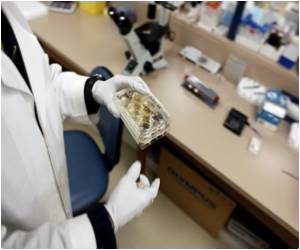
When cancer cells travel along the lymphatic system from one part of the body to another, they can cause metastases – spread to other organs. Many cancer cells, such as those from breast cancer, prostate cancer and lung cancer, enter the lymphatic vessels by releasing molecules that unbutton button-like structures between lymphatic lining cells. This enables them to gain passage into or out of the lymphatic transport system.
SLU scientists have found that molecules known as CRSBP-1 (also termed LYVE-1) ligands, which are a group of growth factors and cytokines, bind to CRSBP-1 receptors, which are located on the surface of lymphatic vessels. This stimulates a response, and acts like a token to gain entry to the lymphatic vessel network. This mechanism for getting into the lymphatic system is used by many cancer cells.
"When the token binds to CRSBP-1, it opens the gate," said Wei-Hsien Hou, Ph.D., lead author of the paper and an M.D./Ph.D. student at Saint Louis University School of Medicine. "Our study is the first to identify a function for this protein. It's important because it gives us a new target to block metastasis, treat edema (swelling of the body from fluid build-up) and enhance the effectiveness of vaccines by strengthening the body's immune responses."
The research team also found that that CRSBP-1 ligand molecules (PDGF-BB and VEGF-A) decrease edema in a mouse model by opening lymphatic intercellular junctions, allowing fluid to drain through the lymphatic network and causing swelling to go down.
Understanding how to gain access into the lymphatic network is significant and will have a strong impact in the fields of cancer and immune research, said Jung S. Huang, Ph.D., a study co-author, professor of biochemistry and molecular biology at Saint Louis University and Hou's mentor. "Once you figure out how breast and other cancers spread, you can begin to work on blocking the process. This is very exciting," he said.
Advertisement
Source-Eurekalert













